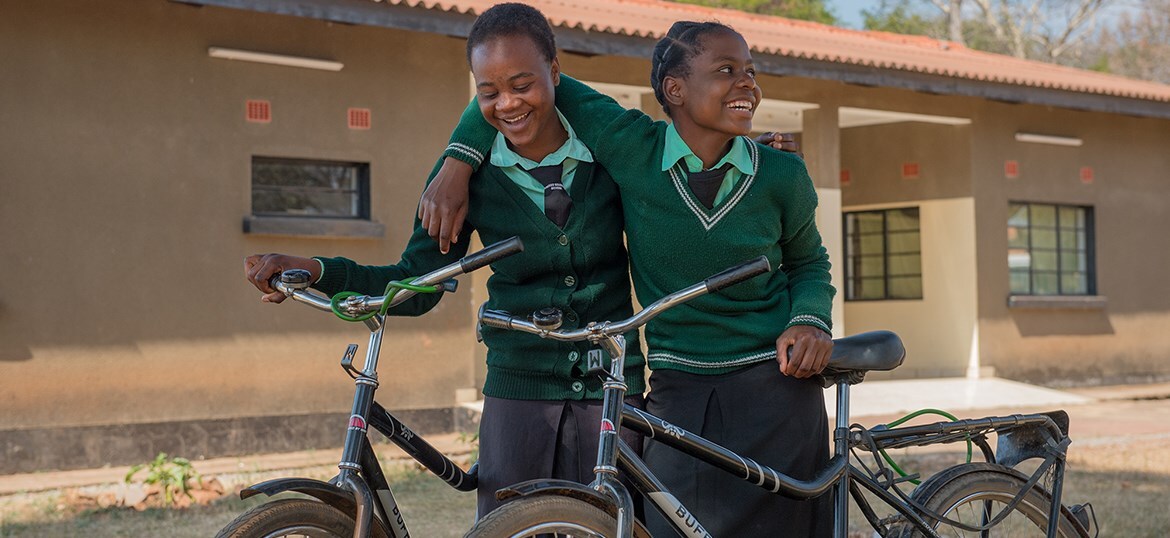World Bicycle Relief (WBR) is a non-profit organization dedicated to providing bicycles as a means of transformation for individuals and communities in developing regions. Founded in 2005, the organization has delivered over 500,000 bicycles to people in need, dramatically improving access to education, healthcare, and economic opportunities. The initiative is built upon the belief that mobility is a fundamental human right and a powerful tool for social and economic development. Therefore, this article delves into the mission, impact, and future goals of World Bicycle Relief, highlighting the significant role bicycles play in uplifting communities.

The Mission of World Bicycle Relief
World Bicycle Relief’s mission revolves around empowering individuals with the power of bicycles. The organization’s core belief is that a simple bicycle can make a profound difference in the lives of those who receive it. Building upon this belief, WBR has developed comprehensive programs to distribute purpose-built bicycles, train local mechanics, and collaborate with various partners to ensure sustainable impact. Consequently, understanding the mission of WBR provides insight into its far-reaching goals and initiatives.
Bridging the Mobility Gap
One of the primary objectives of World Bicycle Relief is to bridge the mobility gap in developing regions. Lack of reliable transportation significantly hinders people’s access to essential services such as education, healthcare, and markets. For students, long and arduous commutes often lead to absenteeism and dropout rates. Healthcare workers face difficulties reaching patients in remote areas, impacting the quality of care provided. By distributing bicycles, WBR addresses these challenges head-on, creating opportunities for individuals to improve their livelihoods. Therefore, bridging the mobility gap is fundamental to WBR’s mission.

Empowering Women and Girls
Another critical aspect of World Bicycle Relief’s mission is empowering women and girls. In many communities, gender disparities limit women’s access to education and economic opportunities. By providing bicycles, WBR enables girls to attend school regularly and pursue their dreams. Women also benefit from increased mobility, allowing them to access markets and healthcare facilities more efficiently. Empowered with transportation, women can contribute more significantly to their families and communities. Therefore, promoting gender equality through mobility is a core focus of WBR’s initiatives.
Impact of World Bicycle Relief
The impact of World Bicycle Relief extends across various sectors, transforming lives and communities through the power of bicycles. By addressing mobility challenges, WBR creates a ripple effect that enhances access to education, healthcare, and economic opportunities. Documenting these outcomes helps quantify the far-reaching benefits of the organization’s efforts. Therefore, exploring the impact of WBR illustrates the transformative potential of bicycles.
Enhancing Educational Opportunities
One of the most significant impacts of World Bicycle Relief is enhancing educational opportunities for students in developing regions. Bicycles make it possible for students to travel long distances to school more efficiently, reducing travel time and physical fatigue. As a result, attendance rates improve, and students have more energy and focus for their studies. Additionally, bicycles empower girls to overcome societal barriers and attend school regularly. Studies have shown that increased access to education leads to better academic performance and higher graduation rates. Therefore, WBR’s contribution to education underscores the critical role of mobility in academic success.

Improving Healthcare Access
World Bicycle Relief also significantly improves healthcare access in underserved communities. Healthcare workers equipped with bicycles can reach remote patients more quickly and efficiently, providing timely care and support. This enhanced mobility allows for better monitoring of chronic conditions, increased vaccination rates, and improved maternal and child health outcomes. Additionally, patients can use bicycles to travel to clinics and health centers, ensuring they receive necessary treatments and check-ups. Therefore, WBR’s impact on healthcare highlights the life-saving potential of increased mobility.
Programs and Partnerships
World Bicycle Relief’s success is built upon a foundation of comprehensive programs and strategic partnerships. These elements enable the organization to implement its initiatives effectively and sustainably. By collaborating with local communities, governments, and other organizations, WBR maximizes its reach and impact. Therefore, understanding the programs and partnerships that drive WBR’s efforts provides insight into the organization’s strategies for success.
Buffalo Bicycle Program
Central to World Bicycle Relief’s initiatives is the Buffalo Bicycle Program. The Buffalo Bicycle is a purpose-built, rugged bicycle designed to withstand the harsh conditions of rural areas. Unlike standard bicycles, the Buffalo Bicycle is specifically engineered for durability and ease of maintenance, ensuring it can handle the demands of daily use in challenging environments. WBR distributes these bicycles through various programs, such as Bicycles for Educational Empowerment, Bicycles for Healthcare, and Bicycles for Economic Development. Therefore, the Buffalo Bicycle Program is a cornerstone of WBR’s efforts to improve mobility.

Collaboration with Local Partners
Collaboration with local partners is crucial for the sustainability and effectiveness of World Bicycle Relief’s programs. WBR works closely with community leaders, schools, healthcare facilities, and local governments to identify needs and distribute bicycles where they are most needed. Additionally, the organization trains local mechanics to maintain and repair the Buffalo Bicycles, ensuring that recipients have ongoing support and access to spare parts. These partnerships foster a sense of ownership and responsibility within communities, contributing to the long-term success of WBR’s initiatives. Therefore, collaboration with local partners is essential for maximizing the impact of WBR’s efforts.
Future Goals and Vision
As World Bicycle Relief continues to grow, the organization has set ambitious goals and a clear vision for the future. These objectives aim to expand the reach and impact of WBR’s programs, empowering more individuals and communities through mobility. By setting strategic goals, WBR positions itself to address evolving challenges and seize new opportunities. Therefore, exploring the organization’s future goals provides insight into its long-term vision and commitment to transformative impact.
Scaling Up Programs
One of the primary future goals of World Bicycle Relief is to scale up its programs to reach more individuals in need. By expanding distribution networks and increasing production of the Buffalo Bicycle, WBR aims to provide even more people with the gift of mobility. This expansion involves enhancing existing programs and exploring new regions where bicycles can make a significant difference. By scaling up, WBR can amplify its impact, bringing the benefits of increased mobility to a larger population. Therefore, scaling up programs is a critical component of WBR’s future strategy.

Strengthening Global Advocacy
World Bicycle Relief also aims to strengthen its global advocacy efforts. By raising awareness about the importance of mobility and the transformative power of bicycles, WBR seeks to inspire broader support and collaboration. Advocacy initiatives include engaging with policymakers, participating in international forums, and sharing success stories to highlight the impact of mobility. By championing the cause of transportation equity, WBR aims to influence global efforts to address mobility challenges. Therefore, strengthening global advocacy is vital for advancing WBR’s mission and vision.
Conclusion: The Power of Mobility
World Bicycle Relief exemplifies the transformative power of mobility in addressing social and economic challenges. Through its comprehensive programs and strategic partnerships, the organization has empowered countless individuals and communities with the gift of bicycles. The impact of WBR’s efforts extends across education, healthcare, and economic development, highlighting the far-reaching benefits of increased mobility.
As the organization looks to the future, its commitment to scaling up programs and strengthening global advocacy positions it to make an even greater impact. By supporting World Bicycle Relief, individuals and organizations can contribute to a cause that brings tangible, life-changing benefits to people in need. Therefore, the power of mobility, championed by WBR, underscores the profound difference that a simple bicycle can make in the world. Join the movement and help transform lives through the gift of mobility.


